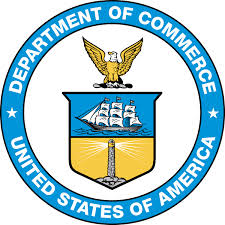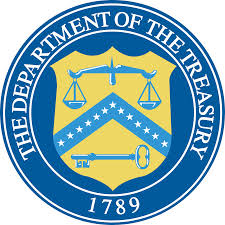March 2019
March 1, 2019
May 2019
May 1, 2019Now Can We Talk About Trade?
The Cherry Blossoms are out, and so is the Mueller Report. Spring has finally come to your Nation’s Capital. There were hopes in the international commerce community that release of the Report on possible collusion with Russia would allow a return to focus on broader issues facing Congress and the Administration. Unfortunately, both branches immediately turned their attention to . . . health care. This suggests that there may be no wins on the horizon on the international trade front. Despite high level negotiations with China later this month, it does not appear today that any resulting agreement will be comprehensive enough to convince the President to eliminate the Section 301 duties which have been dogging the FTZ industry.
The U.S. is not the only country with trade issues to grapple with this month. The U.K. has been unable to resolve exactly how it will extract itself from the European Union. In a strange twist, that may actually mean that more goods from the U.S. will be duty free into the U.K. after the split, now scheduled to take place on April 12th. See more below.

Top Story: Washington Moves Past Mueller Report . . . To Health Care But Not Foreign-Trade Zones
Specter of Auto Industry Tariffs Sparks Lawsuit, Alerts FTZs
The FTZ industry is already faced with Section 232 tariffs and quotas on steel and aluminum. Late last month, the specter that such tariffs could be levied on auto imports once again made the news.


Baseball Season has Begun . . And Brexit Takes Strike Three
Steel And Aluminum Quotas Remain On The Table, And Rankle Canada and Mexico


U.S. Trade Deficit Expands Despite Tariffs

U.S. Foreign-Trade Zones Board Activity
- The Jefferson County Economic Development Corporation has submitted an application to establish a new Alternative Site Framework Foreign-Trade Zone with a proposed service area of Boulder, Clear Creek, Gilpin and Jefferson Counties, Colorado. MORE
- Thoma-Sea Marine Constructors, L.L.C. submitted an application for expansion of subzone 279A to include an additional 12.9 acre site in Huoma and Lockport, Lousiana. MORE
- Gulf Coast Growth Ventures LLC, received approval to operate its San Patricio County facilities as Subzone 122W in San Patricio County, Texas. MORE
- Lexmark International, Inc., submitted a notification of proposed production activity for organic photoconductor drums in Foreign-Trade Zone 123 in Longmont, Colorado. MORE
- Jeneil Biotech, Inc., received authorization of production activity for natural fragrance intermediates in Foreign-Trade Zone 41 in Saukville, Wisconsin. MORE
- Lexmark International, Inc., submitted an application to operate its Longmont, Colorado facilities as a subzone of Foreign-Trade Zone 123. MORE
- Calsonic Kansei North America, submitted a notification of proposed production activity for automotive parts in Foreign-Trade Zone 78 in Shelbyville and Lewisburg, Tennessee. MORE
- Calsonic Kansei North America, submitted a notification of proposed production activity for automotive parts in Foreign-Trade Zone 158 in Canton, Mississippi. MORE
- Universal Metal Products, Inc., submitted a notification of proposed production activity for formed and converted metal for commercial and industrial use in Subzone 12B in Pharr, Texas. MORE
- adidas America, Inc., received approval to operate its Wilkes Barre, Pennsylvania facility as Subzone 24F. MORE
- The Jacksonville Port Authority received approval to expand the alternative site framework service area of Foreign-Trade Zone 64 by adding Flagler County, Florida. MORE
- Mayfield Consumer Products, received authorization of production activity for candles in Foreign-Trade Zone 249 in Western Kentucky. MORE
- Puerto Rico Steel Products Corporation submitted a notification of proposed production activity for construction and fencing products in Foreign-Trade Zone 163 in Ponce, Puerto Rico. MORE
- Framatome, Inc. submitted a notification of proposed production activity for fuel rod subassemblies in Foreign-Trade Zone 203 in Moses Lakes, Washington. MORE
- Fender Musical Instruments Corporation, received approval to operate its San Bernardino and Corona, California facilities as Foreign-Trade Subzone 50U. MORE
- BWF America, Inc. submitted a notification of proposed production activity for textile/felt filter bags and other filter products for industrial use in Foreign-Trade Zone 47 in Boone County, Kentucky. MORE
Now Can We Talk About Trade?
The Cherry Blossoms are out, and so is the Mueller Report. Spring has finally come to your Nation’s Capital. There were hopes in the international commerce community that release of the Report on possible collusion with Russia would allow a return to focus on broader issues facing Congress and the Administration. Unfortunately, both branches immediately turned their attention to . . . health care. This suggests that there may be no wins on the horizon on the international trade front. Despite high level negotiations with China later this month, it does not appear today that any resulting agreement will be comprehensive enough to convince the President to eliminate the Section 301 duties which have been dogging the FTZ industry.
The U.S. is not the only country with trade issues to grapple with this month. The U.K. has been unable to resolve exactly how it will extract itself from the European Union. In a strange twist, that may actually mean that more goods from the U.S. will be duty free into the U.K. after the split, now scheduled to take place on April 12th. See more below.

